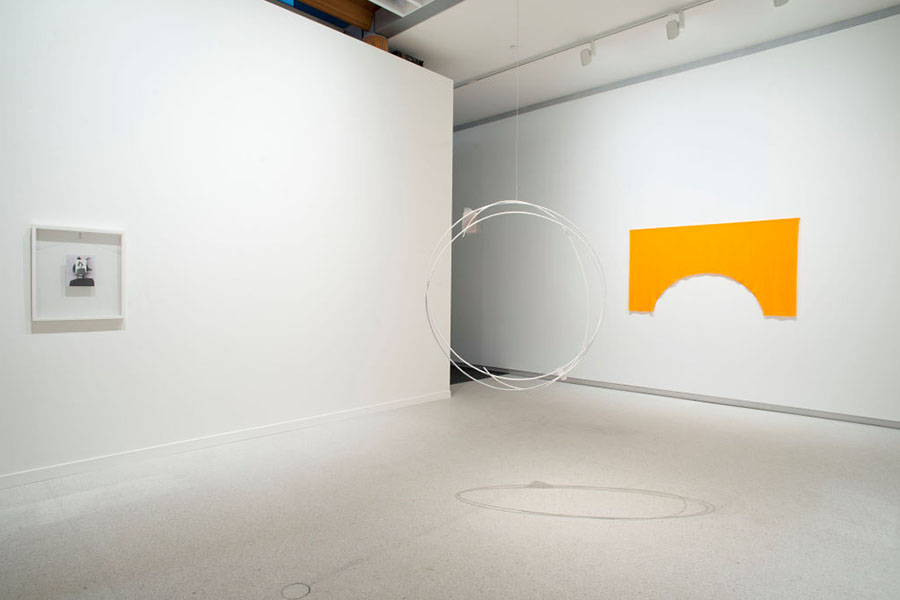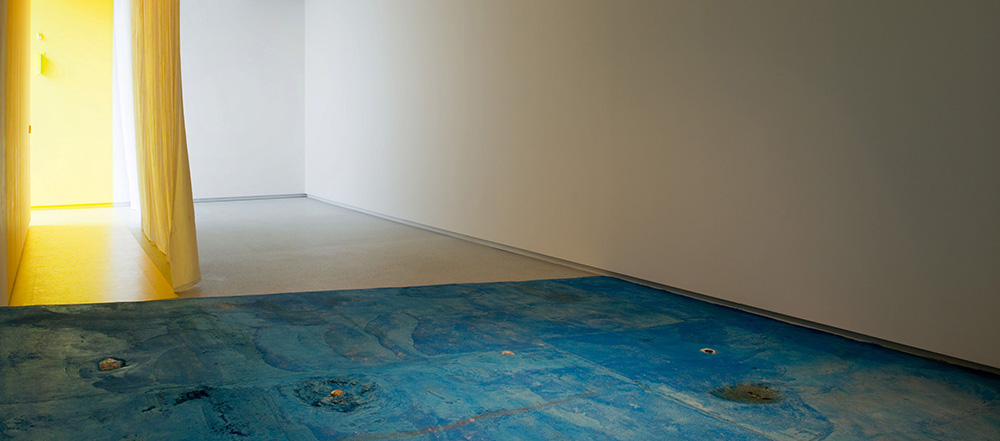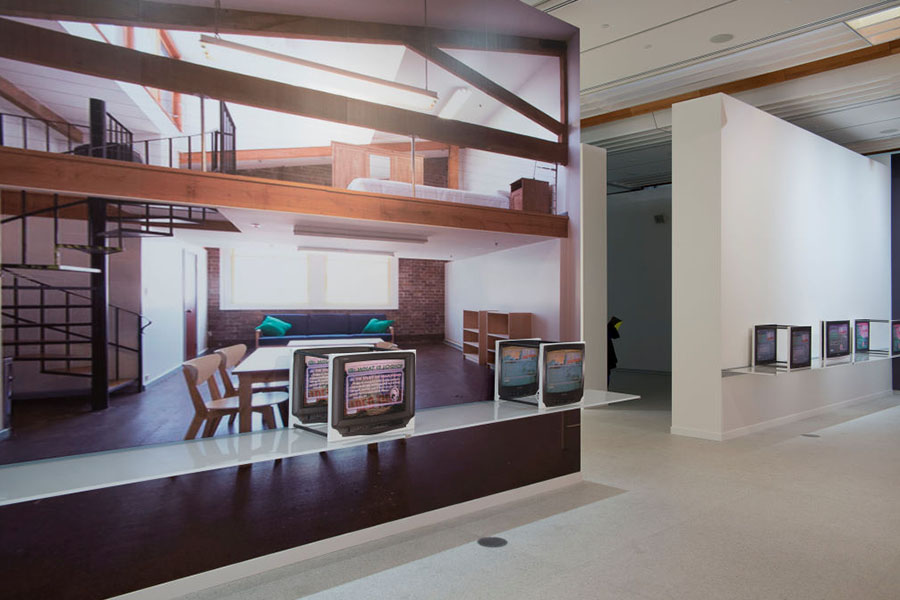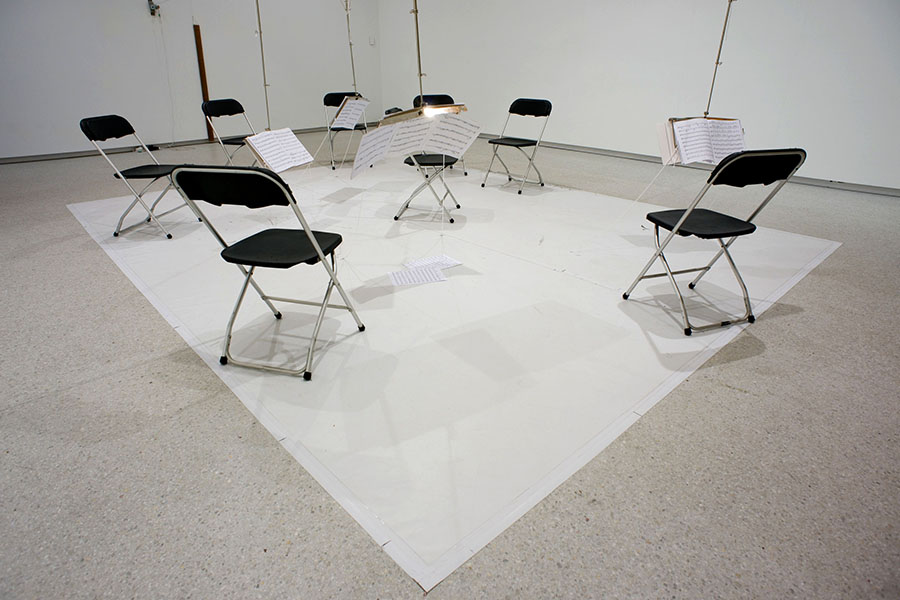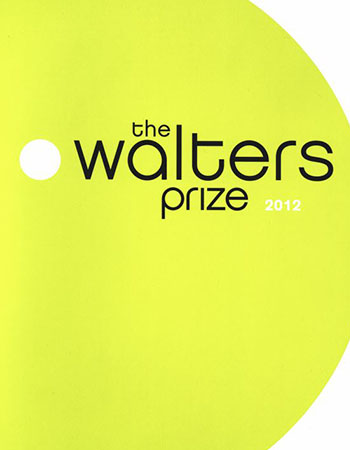—
exhibition Details
Winner
Finalists
International judge
Judge's statement
Jury
Jury's statement
Sponsors
Coordinating curator
Publication
Winner of the Walters Prize 2012
The Walters Prize 2012 was awarded to Kate Newby for Crawl out your window. The winner was announced by international judge, Mami Kataoka at a gala dinner on Saturday 20 October 2012.
Finalists
- Introductory logic video tutorial 2010, by Simon Denny: first shown at Artspace, Sydney (5 March – 10 April 2010)
- Floor Resistance 2011, by Alicia Frankovich: first shown at Hebbel Am Ufer, HAU 3, Berlin (25 June 2011)
- Crawl out your window 2010, by Kate Newby: first shown at Gesellschaft für aktuelle Kunst GAK, Bremen (28 August – 7 November 2010)
- Fanta Silver and Song 2011, by Sriwhana Spong: first shown at Gertrude Contemporary, Melbourne (4 February – 5 March 2011)
International judge
The international judge for the Walters Prize 2012 was Mami Kataoka, Chief Curator at the Mori Art Museum (MAM) in Tokyo, Japan. Kataoka's curatorial practice extends to projects the world over, including the 9th Gwangju Biennale (2012) in South Korea, Phantoms of Asia: Contemporary Awakens the Past (2012) at Asian Art Museum in San Francisco, and Ai Weiwei: According to What? (2012) at Hirshhorn Museum and Sculpture Garden in Washington DC.
Judge's statement
I would like to award the 2012 Walters Prize to Kate Newby. It has been very difficult to create an order among the four artists' practices, which are all outstanding in different ways. While Newby's work is probably the least eloquent by making minimal interventions into the given space, it embraces memories of locations, her personal gestures and subtle actions, which viewers can relate to through small objects embedded into the concrete ramp and the materiality of the suspended fabric. More importantly, the use of natural light and the way the work gradually crawls out of the museum space is the most reserved but radical way of transcending the fixed architectural space for contemporary art, liberating us towards wider universal space. The colour yellow emphasizes the cognition for the light and the space and the whole installation offers the physical experience and awareness of both void and silence. This decision is derived from my attempt to evoke a state of equilibrium in our ever competitive and hierarchical society and its abiding belief in power.
Jury
The 2012 jury comprised:
- David Cross – artist, writer, curator and associate professor in Fine Arts at Massey University, Wellington
- Aaron Kriesler – curator at Dunedin Public Art Gallery, Dunedin
- Kate Montgomery – senior arts advisor for Visual Art at Creative New Zealand
- Gwynneth Porter – writer, editor and publisher
Jury's statement
In a two-year period marked by a multitude of compelling exhibitions and projects the jury has settled on four bodies of work which were each seen to occupy unique and adventurous territory in New Zealand art. Nominations were arrived at on the basis of showing strong evidence of a particular kind of searching engagement within the artists' own practice and with the conditions of the larger world beyond.
While a variety of methodological approaches are visible in the selection, this was not the intention of the jury at the outset. Rather, it was a by-product of the vitality and imaginativeness of the field in general. What does inform all of the selections is an engagement with how the discrete sculptural object is pushed beyond itself into film, installation, work in public space and performance.
The jury is firmly of the belief that each artist has in startling ways interrogated and pushed their practice with great rigour and dexterity to offer new meditations on the possibilities of material, form and its assorted social contexts. Ultimately, each project demonstrated a palpable influence on the art making and viewing communities from which it has arisen.
While the jury were impressed with a number of Simon Denny's recent bodies of work, his major project for Artspace, Sydney, Introductory logic video tutorial, was identified as being especially significant. The exhibition set up a platform for Denny to retrace, expand and actualise his academic experiences as a philosophy student at Sydney University. For the Artspace installation, the artist created a network of interconnecting tautological statements, screen grabs, television monitors (both real and surrogates), and an inventory of the gallery's audiovisual gear which together charted a clever path through a fictional educational video.
Alicia Frankovich has developed a number of exceptional bodies of work over the prize period both in New Zealand and overseas. The panel was especially compelled by her performance work Floor Resistance which took place at the Hebbel Am Ufer in Berlin in 2011. This work re-negotiates the audience/performer relationship employing an orchestra in an unconventional configuration to unfold highly original ideas pertaining to the staging of live art. By altering the positioning and placement of the orchestra in the space, Frankovich asks us to rethink and experience anew the relationship between audience member and participant.
Kate Newby's works alert our attention to specific textures and experiences that subtly set themselves apart from the everyday. Crawl out your window presented a series of works developed for the Gesellschaft für Aktuelle Kunst (GAK) in Bremen, Germany. Newby's projects there, like a number of others since, were composed of simple materials and gestures rich in association which quietly forged links between her host institution, their gallery spaces and the world outside. Entering into conversation with their surroundings in a sensitive and measured way, Newby's works drew from and amplified the contexts within which they found themselves.
Sriwhana Spong's Fanta Silver and Song drew together work based in the artist's fathoming of interpretation, gesture, orientalism and sculptural and etheric presence. The two films – Costume for a Mourner and Lethe-wards – re-imagined a Diaghilev ballet originally performed by the Ballets Russes of which nothing more than static fragments survived. The show also involved collages made from pages of 1960s ballet picture books, silk gauze costumes dyed in soft-drink, and a geometric sculpture which seem to suggest diagrams of movement as an emergent individual or a group event.
Sponsors
Founding benefactors and Principal donors:
Erika and Robin Congreve and Dame Jenny Gibbs
Major donor:
Dayle Mace
Founding sponsor:
Saatchi & Saatchi
Preferred accommodation provider:
Pullman Auckland
Coordinating curator
The coordinating curator for the Walters Prize 2012 was Natasha Conland.
Publication
Read the Walters Prize 2012 publication free online via ISSUU
- Date
- —
- Curated by
- Natasha Conland
- Location
- Level 2
- Cost
- Free entry
Related Content
Related Artworks
King George I
oil on canvas
Auckland Art Gallery Toi o Tāmaki, gift of His Excellency the Governor General, Sir Willoughby Norrie, 1957
On display
Lethe-wards
35mm film transferred to video and digital video, two-channels, standard definition (SD), 16:9, black and white/colour, silent/stereo sound
Chartwell Collection, Auckland Art Gallery Toi o Tāmaki, purchased 2010
Introductory Logic Video Tutorial double canvas 2
inkjet on canvas, metal fittings
Auckland Art Gallery Toi o Tāmaki, gift of the artist and Michael Lett, 2013
